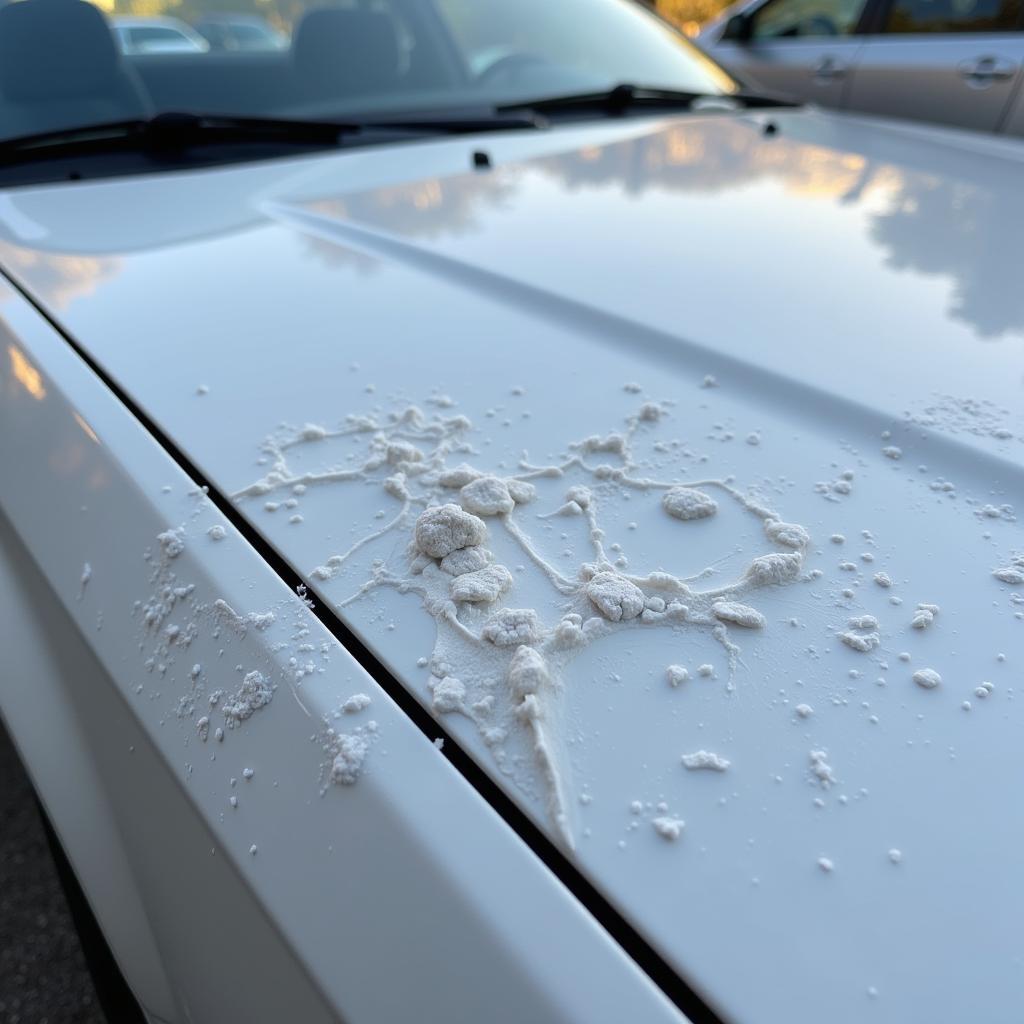Chipping paint on your car is more than just an eyesore; it’s an open invitation to rust and corrosion, which can seriously compromise your vehicle’s structural integrity. This guide will provide you with expert advice on how to repair chipping paint on car, preventing further damage, and restoring your car’s appearance. how to repair chipping paint on car
Understanding the Causes of Chipping Car Paint
Before tackling the repair, it’s crucial to understand why your car’s paint is chipping in the first place. Common culprits include rock chips, road debris, minor accidents, harsh weather conditions, and even bird droppings. Identifying the root cause can help prevent future chipping.
Common Culprits of Chipped Paint
- Road Debris: Small stones, gravel, and other debris kicked up by tires are a leading cause of paint chips.
- Rock Chips: These are particularly common on the front of the vehicle, especially the hood and bumper.
- Minor Accidents: Even seemingly insignificant bumps and scrapes can lead to paint chipping.
- Weather Conditions: Extreme temperatures, UV exposure, and moisture can weaken the paint over time, making it more susceptible to chipping.
- Bird Droppings: The acidic nature of bird droppings can etch into the paint, causing damage that can lead to chipping.
Assessing the Damage: How Bad is the Chip?
Not all paint chips are created equal. A tiny chip might require a simple touch-up, while larger areas of damage may need more extensive repair. Accurately assessing the damage is crucial for choosing the right repair method.
Types of Paint Chips
- Minor Chips: Small, superficial chips that only affect the clear coat or the top layer of paint.
- Medium Chips: Deeper chips that expose the primer or base coat.
- Large Chips: Chips that expose the bare metal, increasing the risk of rust and corrosion.
how to repair car paint chipping
DIY Repair Chipping Paint on Car: Step-by-Step Guide
For minor chips, a DIY repair is often a viable option. Here’s a step-by-step guide:
- Clean the Area: Thoroughly wash and dry the area around the chip to remove any dirt or debris.
- Sand the Chip (If Necessary): If the chip is rough or uneven, lightly sand the area with fine-grit sandpaper.
- Apply Touch-Up Paint: Use a touch-up paint pen or brush to carefully apply the paint to the chipped area.
- Level the Paint: If necessary, use a razor blade or specialized tool to carefully level the touch-up paint with the surrounding surface.
- Apply Clear Coat: Once the touch-up paint is dry, apply a layer of clear coat to protect the repair and restore the shine.
“Proper surface preparation is key to a successful touch-up job,” advises automotive expert, Michael Davis. “Taking the time to clean and properly prep the area will make all the difference in the final result.”
When to Call a Professional
While DIY repairs are suitable for minor chips, more extensive damage requires professional attention. If the chip has exposed bare metal or if you’re uncomfortable with the DIY process, it’s best to consult a professional auto body shop.
Signs You Need Professional Help
- Extensive Rust: If rust has formed around the chip, professional repair is necessary to prevent further damage.
- Large or Deep Chips: Chips that expose a significant amount of bare metal are best handled by professionals.
- Difficulty Matching Paint: If you’re having trouble matching the touch-up paint to your car’s original color, a professional can ensure a seamless repair.
“Attempting a DIY repair on significant paint damage can often exacerbate the problem,” warns Sarah Miller, an experienced auto body technician. “It’s often best to leave complex repairs to the professionals who have the right tools and expertise.”
Preventing Future Paint Chips
Prevention is always better than cure. Protecting your car’s paint from chips can save you time, money, and frustration in the long run. Here are a few preventative measures:
- Regular Washing and Waxing: Keeping your car clean and waxed can help protect the paint from environmental damage.
- Paint Protection Film (PPF): This clear film can be applied to vulnerable areas like the hood, bumper, and fenders to shield them from rock chips and other debris.
- Careful Parking: Avoid parking too close to other vehicles or in areas where debris is likely to be kicked up.
- Touch Up Chips Promptly: Addressing small chips quickly can prevent them from becoming larger and more expensive to repair.
how to repair car paint chipping reddit
Conclusion
Repairing chipping paint on your car is essential for maintaining its appearance and protecting it from further damage. By understanding the causes of chipping, assessing the extent of the damage, and choosing the appropriate repair method, you can keep your car looking its best for years to come. Remember to address chips promptly to prevent further deterioration.
FAQs
- What is the best way to match touch-up paint to my car’s color?
- Can I repair a chipped area that has rusted?
- How long does it take for touch-up paint to dry?
- What is the average cost of professional paint chip repair?
- How can I prevent paint chips on my car?
- Is it necessary to apply clear coat after touch-up paint?
- Can I use regular nail polish for touch-up paint?
For further information on maintaining your vehicle’s pristine condition, explore our articles on various car care topics. Need immediate assistance? Contact our 24/7 support team via WhatsApp: +1(641)206-8880 or Email: [email protected]. We’re always ready to help.


